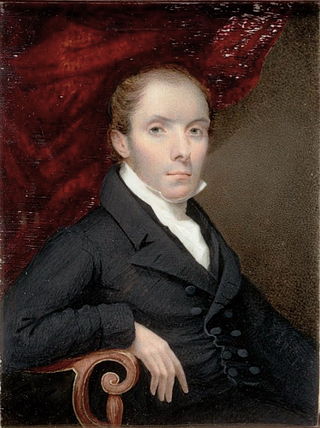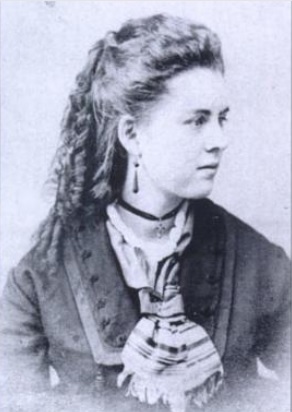Related Research Articles

The Isabella Stewart Gardner Museum is an art museum in Boston, Massachusetts, which houses significant examples of European, Asian, and American art. Its collection includes paintings, sculpture, tapestries, and decorative arts. It was founded by Isabella Stewart Gardner, whose will called for her art collection to be permanently exhibited "for the education and enjoyment of the public forever."

Lilla Cabot Perry was an American artist who worked in the American Impressionist style, rendering portraits and landscapes in the free form manner of her mentor, Claude Monet. Perry was an early advocate of the French Impressionist style and contributed to its reception in the United States. Perry's early work was shaped by her exposure to the Boston School of artists and her travels in Europe and Japan. She was also greatly influenced by Ralph Waldo Emerson's philosophies and her friendship with Camille Pissarro. Although it was not until the age of thirty-six that Perry received formal training, her work with artists of the Impressionist, Realist, Symbolist, and German Social Realist movements greatly affected the style of her oeuvre.

Isabella Stewart Gardner was an American art collector, philanthropist, and patron of the arts. She founded the Isabella Stewart Gardner Museum in Boston.

Ellen Day Hale was an American Impressionist painter and printmaker from Boston. She studied art in Paris and during her adult life lived in Paris, London and Boston. She exhibited at the Paris Salon and the Royal Academy of Arts. Hale wrote the book History of Art: A Study of the Lives of Leonardo, Michelangelo, Raphael, Titian, and Albrecht Dürer and mentored the next generation of New England female artists, paving the way for widespread acceptance of female artists.
Anne Hawley was the Norma Jean Calderwood Director of the Isabella Stewart Gardner Museum in Boston from 1989 until 2015. Founded in 1903 and one of Boston's most important cultural institutions, the museum is a highly unique installation of Gardner’s private collection, considered to be a work of art in totality. Hawley stepped down from the position at the end of 2015 with plans to continue working with artists and the artistic community. She has been named a Resident Fellow at Harvard's Institute of Politics, beginning in spring 2016.

Thomas Edwards (1795–1869) was an artist in 19th-century Boston, Massachusetts, specializing in portraits. Born in London and trained at the Royal Academy, he worked in Boston in the 1820s-1850s, and in Worcester in the 1860s.

Ella Augusta "Eleanor" Norcross was an American painter who studied under William Merritt Chase and Alfred Stevens. She lived the majority of her adult life in Paris, France, as an artist and collector and spent the summers in her hometown of Fitchburg, Massachusetts. Norcross painted Impressionist portraits and still lifes, and is better known for her paintings of genteel interiors.
Laura Owens is an American painter, gallery owner and educator. She emerged in the late 1990s from the Los Angeles art scene. She is known for large-scale paintings that combine a variety of art historical references and painterly techniques. She lives and works in Los Angeles, California.

Helen Mary Knowlton was an American artist, art instructor and author. She taught in Boston from 1871 until the mid-1910s, when she was in her 70s. Her instructor and later employer, William Morris Hunt, was the subject of a portrait she made and several books; she is considered his principal biographer.
Rachel Perry is an American artist. She is known for conceptual works using drawing, photography, video, collage, sculpture and performance, which address “the fleeting nature of experience, the elusiveness of desire, and the persistence of objects in a throwaway culture.” Art critic Jerry Saltz has written that her work "not only grappl[es] with consumerism but [she is] just about swallowed whole by it.” Her work also considers themes of gender identity, narcissism, privacy and information overload.
Ruth Laskey is an American artist known for her Minimalist weavings and grid paintings.

Laura Coombs Hills (1859–1952) was an American artist and illustrator who specialized in watercolor and pastel still life paintings, especially of flowers, and miniature portrait paintings on ivory. She became the first miniature painter elected to the Society of American Artists, and was a founder of the American Society of Miniature Painters. She also worked as a designer and illustrated children's books for authors such as Kate Douglas Wiggin and Anna M. Pratt.

Tomashi Jackson is an American multimedia artist working across painting, video, textiles and sculpture. Jackson was born in Houston, Texas, raised in Los Angeles, and currently lives and works in New York, NY and Cambridge, MA. Jackson was named a 2019 Whitney Biennial participating artist. Jackson also serves on the faculty for sculpture at Rhode Island School of Design. Her work is included in the collection of MOCA Los Angeles. In 2004, a 20-foot-high by 80-foot-long mural by Jackson entitled Evolution of a Community was unveiled in the Los Angeles neighborhood of West Adams.

Ethel Blanchard Collver was an American Impressionist artist and teacher who was best known for her portraits of children, scenes of daily life, and landscapes.
Jessica Snow is an American abstract artist, filmmaker, curator, and professor. Distinguishing characteristics of Snow’s paintings and drawings include bright, vivid colors through a visual language that employs color, shape and texture Snow's sources of artistic inspiration include landscape design, ancient art history, and the natural world. Her presentation of these subjects is influenced by traditions of geometric abstraction, biomorphism, and color field painting. She lives and works in San Francisco, California, where she teaches painting, drawing and art appreciation at the University of San Francisco.
Jackie Saccoccio was an American abstract painter. Her works, considered examples of gestural abstraction, featured bright color, large canvases, and deliberately introduced randomness.

Edith Loring Getchell was an American landscape painter and etcher, highly regarded for the "exquisite" tonalism of her etchings, drypoints and watercolors." Working during the "American Etching Revival," a period that lent legitimacy to an art form that had once been scorned as commercial, Getchell made use of the opportunities the vogue for etching gave her, despite a crowded field and the gender discrimination of her era. Considered one of America's leading etchers in her lifetime, Getchell's work is notable for its skill, its aesthetic values and its approach to depicting American landscape.
Annie Hurlburt Jackson (1877–1959) was an American artist known for her miniature and portrait painting.

Mary Crease Sears was an American bookbinder and cover designer, know for her Arts and Crafts style work.
Josephine Hartwell Shaw (1865–1941) was an American jeweler and metalworker known for her Arts and Crafts style jewelry.
References
- ↑ "Biography: Ambreen Butt". Artist Pension Trust. Retrieved March 20, 2014.
- 1 2 3 "Ambreen Butt:Residency". Isabella Stewart Gardner Museum. Archived from the original on March 20, 2014. Retrieved March 14, 2014.
- 1 2 "Ambreen Butt". Art in America. Retrieved 2019-03-03.
- ↑ Massachusetts College of Art Commencement Program, 1997.
- ↑ Miller, Francine Koslow. "Ambreen Butt at Carroll and Sons". Art in America. Retrieved March 14, 2014.
- ↑ "I Am My Lost Diamond". MassArt. 2019-01-10. Retrieved 2019-03-03.
- ↑ Ludwig, Justine (2013). Realms of Intimacy: Miniaturist Practice From Pakistan. Library of Congress. ISBN 9781880593110.
- ↑ "A portrait of the artist, Ambreen Butt". The Express Tribune. 24 Feb 2013. Retrieved 20 March 2015.
- ↑ "Ambreen Butt". Carroll and Sons Art Gallery. Archived from the original on 2014-03-20. Retrieved March 20, 2014.
- ↑ "Pakistani Artist, Known For Miniature Paintings, Goes Big With Female Warrior At The Gardner". www.wbur.org. Retrieved 2019-03-03.
- ↑ "Ambreen Butt – U.S. Department of State" . Retrieved 2019-03-03.
- ↑ "Ambreen Butt". Artadia. Retrieved 2019-06-11.
- ↑ Butt, Ambreen, 2003, I Must Utter What Comes to My Lips, exhibition catalogue, 1 March- 11 May, Worcester Art Museum, Worcester, MA.
- ↑ Butt, Ambreen, I Need A Hero, exhibition card, 23 June - 29 July 2005, Kustera Tilton Gallery, New York.
- ↑ Butt, Ambreen, Mark My Words, exhibition pamphlet, 7 December 2018- 14 April 2019, National Museum of Women in the Arts, Washington, DC.